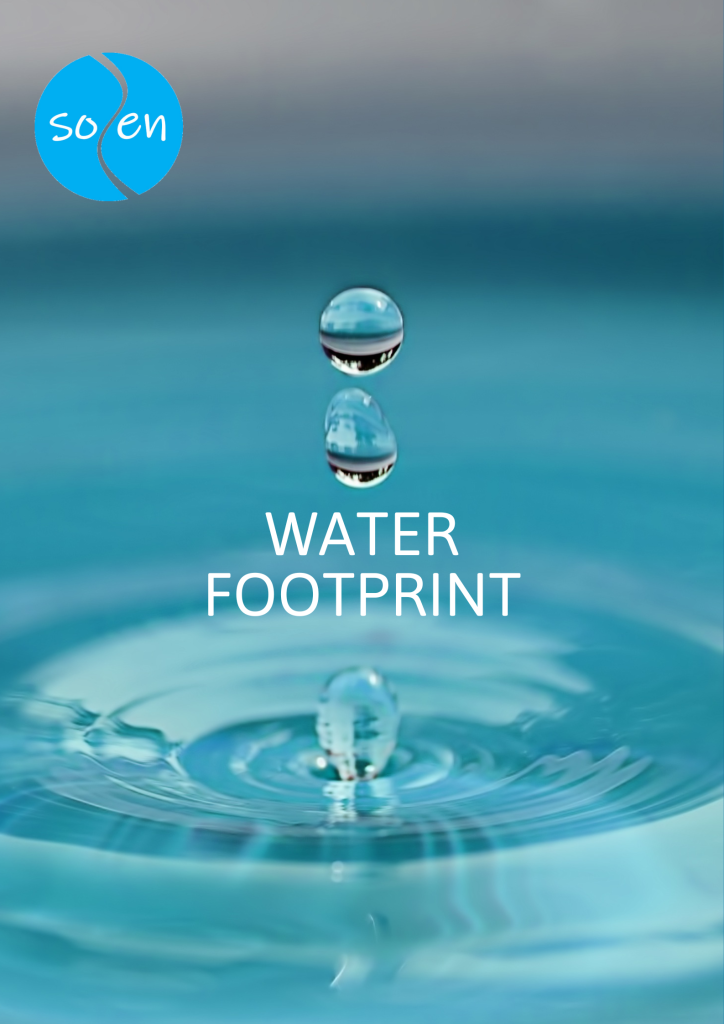1. The concept of “Water Footprint”
“Water footprint” is an indicator of both direct and indirect water use by a consumer or producer.
The “water footprint” of an individual, community, or business is defined as the total amount of freshwater used to produce the goods and services consumed by that individual or community, or the total amount of water used to produce the goods and services consumed by that individual or community. sweets are used by businesses to produce those goods and services.
2. Elements of “Water Footprint”
“Water footprint” includes 3 elements:
– Green water footprint is the amount of water that plants absorb that comes from rainwater and does not seep into the ground.
– Blue water footprint is the amount of water from surface water or groundwater used in industry and agriculture.
– Gray water footprint is the amount of water needed to dilute polluted water sources, meeting water quality standards.
Among manufacturing industries, the agricultural sector has the largest water footprint, accounting for about 92% of the blue water footprint. Some documents record that the agricultural sector uses about 70-72% of water resources, but the figure of more than 90% here is the actual amount of water consumed, including the green water footprint. Industry also uses significant amounts of water, but most of that water does not evaporate or remain in products but returns to the source. For example, power plants use water for cooling, but that water is not lost or consumed and is discharged back into the water source.
3. The relationship between “water footprint” and “sustainable development”
“Water footprint” and “Sustainable development” have a close relationship with each other. By assessing the “Water Footprint” of an industry, we can understand how water is used in each river basin and how that relates to the amount of water in the river and the amount of water available. necessary for that river or aquifer to maintain biodiversity, maintain ecological services as well as devise appropriate and sustainable water use options. Currently, in many regions there is a situation where the amount of water that can be supplied is always less than the amount of water that the agricultural sector and other industries in the region need to use, thereby causing water shortages in production. This also stems from the fact that there has not been a complete and correct assessment of the water footprint of manufacturing industries in that region.
On the other hand, one of the things we can do to ensure food security is to use green water resources intelligently and effectively. We can reduce the pressure on blue water sources from rivers, lakes, and underground aquifers by collecting and effectively using rainwater as well as thoroughly treating wastewater for reuse in drinking water. appropriate purposes in the production and daily life process, the “Green Water Footprint” and “Gray Water Footprint” will also be reduced and that is also aiming at the goal of “Sustainable Development”.
References:
- Professor Tony Allan, “‘Virtual Water’: A long term solution for water short Middle Eastern economies?,” Pap. Present. 1997 Br. Assoc. Festiv. Sci. Roger Stevens Lect. Theatr. Univ. Leeds, Water Dev. Sess., 1997. Nguồn: https://lwrg.files.wordpress.com/2014/12/allan-t-virtual-water_a-long-term-solution-for-the-middle-east.pdf
- Liên Tâm, 2012. Dấu chân nước và sự phát triển bền vững. Cục Quản lý Tài nguyên Nước số ra ngày 05/09/2012. Nguồn: http://dwrm.gov.vn/index.php?language=vi&nv=news&op=Tai-nguyen-nuoc/Dau-chan-nuoc-va-phat-trien-ben-vung-2448



 Tiếng Việt
Tiếng Việt 日本語
日本語